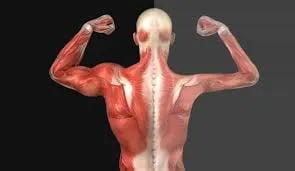What is Muscular Dystrophy?
Muscular dystrophy encompasses a range of conditions characterized by a gradual decline in muscle strength and mass. The condition arises from genetic mutations that disrupt the production of essential proteins for muscle health.
HEALTH
3/12/20251 min read


Muscular dystrophy encompasses a range of conditions characterized by a gradual decline in muscle strength and mass. The condition arises from genetic mutations that disrupt the production of essential proteins for muscle health.
This disorder manifests in various forms, with symptoms typically appearing in childhood, predominantly affecting boys in the most common types. However, some forms may not become apparent until adulthood.
Unfortunately, there is currently no cure for muscular dystrophy. However, treatments such as medications and therapy can alleviate symptoms and potentially delay the progression of the disease.
Symptoms
Symptoms of muscular dystrophy vary depending on the type, but progressive muscle weakness is a common feature. In Duchenne type muscular dystrophy, which is the most prevalent form and more common in boys, symptoms often begin in early childhood. These signs and symptoms may include:
Frequent falls
Difficulty getting up from a lying or sitting position
Challenges with running and jumping
A waddling gait
Walking on the toes
Enlarged calf muscles
Muscle pain and stiffness
Learning disabilities
Delayed growth
It's important to note that while girls can be carriers of Duchenne muscular dystrophy and may exhibit milder symptoms, the condition primarily affects boys. Early detection and management can help improve quality of life for individuals with muscular dystrophy.
Causes
Certain genes are involved in making proteins that protect muscle fibers. Muscular dystrophy occurs when one of these genes is defective.
Each form of muscular dystrophy is caused by a genetic mutation particular to that type of the disease. Most of these mutations are inherited.
Risk factors
Muscular dystrophy occurs in both sexes and in all ages and races. However, the most common variety, Duchenne, usually occurs in young boys. People with a family history of muscular dystrophy are at higher risk of developing the disease or passing it on to their children.
